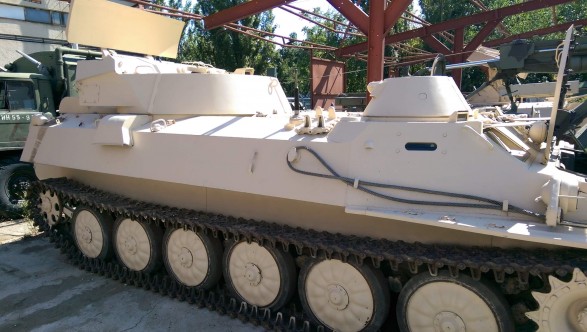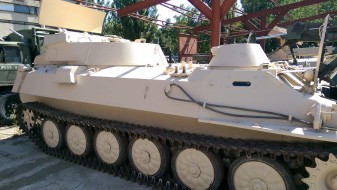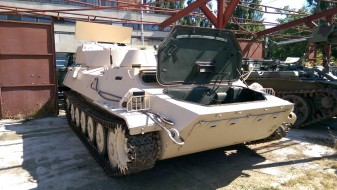Vehicle data sheet
SNAR-10
Manufacturer: , Soviet Union

| Type: Tracked | Weight: 11.9 t |
| Produced: 1960 | Size: Length 6.45 m m, Height 1.86 m |
| Number built: | Engine: Diesel, 240 HP |
| Crew: 2 | Speed: 61 km/h |
Description
SNAR-10M1 is designed for location of moving convoys (rocket, artillery and mechanized units), single moving ground targets (tank, car, armored personnel carrier, group of people, single person), sea-surface targets (motor boat, ship, assault landing craft, etc.) and low-flying targets (helicopter, sports plane, UAV). High accuracy of location for targets and bursts of shells and mortar bombs allows the radar to be used for adjustment of own artillery fire.
The radar system is equipped with modern intercommunication and external communication facilities for automated data transmission, and an autonomous navigation system with digital terrain maps and satellite navigation subsystem. Standard equipment of the SNAR-10M1 includes autonomous navigation facilities with GLONASS/GPS, digital terrain map, intercommunication and external communication facilities and data transmission equipment.
The latest radar equipment and high-performance operator workstations enable reconnaissance and radar data processing for ranges up to 40 km.
The radar system has the standard power supply system with a low-noise diesel power generator, an air conditioner, a heater and filtering/ventilation facilities providing comfortable working conditions in the crew compartment.
The radar system is mounted on a standard MT-LB multipurpose tracked armoured vehicle. The hull of the MT-LB is all-welded steel armour with the crew compartment at the front, engine immediately behind the crew compartment on the left side and the troop compartment at the rear of the hull. The all-welded steel armour provides the occupants with protection from small arms fire and shell splinters.
For its self-protection, the MT-LB is armed with a 7.62mm PKT light machine gun. The SNAR-10M1 has a crew of four soldiers and the radar system is able to operate autonomously up to 3 days.


